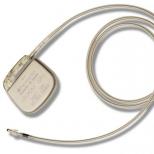Vegetative-vascular dystonia: types, causes, symptoms, treatment in adults and children
Vegetative-vascular dystonia: types, causes, symptoms, treatment in adults and children
Perhaps there is no person among us who has never heard of vegetative-vascular dystonia (VVD). This is no coincidence, because according to statistics it affects up to 80% of the adult population of the planet and about 25% of children. Due to greater emotionality, women suffer from autonomic dysfunction three times more often than men.
Pathology is usually detected in childhood or young age, the peak of symptoms occurs in 20-40 years- the most able-bodied and active period, while the usual rhythm of life is disturbed, professional activity becomes more difficult, intra-family relationships suffer.
What is it: a disease or features of the functioning of the nervous system? The question of the essence of vegetative dysfunction remained controversial for a long time, experts first defined it as a disease, but as patients were monitored, it became clear that VVD is a functional disorder, primarily affecting the psyche and autonomics.
At the same time, functional disorders and subjective painful sensations not only force you to change your lifestyle, but also require timely and qualified assistance, because over time they can develop into more - coronary heart disease, hypertension, ulcers or diabetes.
Causes of vegetative-vascular dystonia
The autonomic nervous system, which includes the sympathetic and parasympathetic divisions, regulates the function of internal organs, maintaining a constant internal environment, body temperature, pressure, pulse, digestion, etc. The correct response of the body to external stimuli, its adaptation to constant changing environmental conditions, stress and overload.
The autonomic nervous system works independently, autonomously, does not obey our desire and consciousness.Sympathy determines such changes as an increase in pressure and pulse, pupil dilation, acceleration of metabolic processes, and parasympathetic responsible for hypotension, bradycardia, increased secretion of digestive juices and smooth muscle tone. Almost always, these sections of the autonomic nervous system have an opposite, antagonistic effect, and in different life circumstances, the influence of one of them prevails.

With a disorder of the autonomic function, a variety of symptoms appear that do not fit into the picture of any of the known diseases of the heart, stomach or lungs. With VVD, they usually do not find organic damage to other organs, and the patient's attempts to find a terrible disease in himself are futile and do not bring the expected results.
VSD is closely related to the emotional sphere and mental characteristics, therefore, it usually proceeds with a variety of manifestations of a psychological nature. It is very difficult to convince a patient that he has no pathology of internal organs, but it is a psychotherapist who can provide really effective help.
Causes of vegetative-vascular dystonia very different and, sometimes, lie in early childhood or even the period of intrauterine development. Among them, the most important are:
- Intrauterine, abnormal births, childhood infections;
- Stress, neurosis, severe physical overload;
- Traumatic brain injuries and neuroinfections;
- Hormonal changes during pregnancy, in adolescence;
- Heredity and features of the constitution;
- The presence of chronic pathology of internal organs.
The pathological course of pregnancy and childbirth, infections in early childhood contribute to the manifestation of signs of vegetative-vascular dystonia in children. Such babies are prone to whims, restless, often spit up, suffer from diarrhea or constipation, and are prone to frequent colds.
In adults, among the causes of vegetative-vascular dystonia, stress, strong emotional experiences, and physical overload come to the fore. Morbidity in childhood, poor physical health and chronic pathology can also become a background for VVD in the future.
In adolescents, vegetative-vascular dystonia is associated with rapid growth, when the vegetative system simply “does not keep up” with physical development, the young body cannot properly adapt to the increased demands on it, symptoms of adaptation disorders appear, both psychological in the team and family, and physical - with palpitations, shortness of breath, etc.
An important role belongs to heredity. It is no secret that a person inherits personality traits, type of response in stressful situations, character and constitution from their parents. If there are people in the family who suffer from autonomic dysfunction, diabetes, hypertension, peptic ulcer associated with it, then the probability of pathology in the offspring is high.
Symptoms of VVD
Symptoms of vegetative-vascular dystonia are extremely diverse and affect the functioning of many organs and systems. For this reason, patients in search of a diagnosis undergo all kinds of studies and visit all specialists known to them. Usually, by the time the diagnosis is established, especially active patients have an impressive list of diagnostic procedures passed and are often themselves confident in the presence of a serious pathology, because the symptoms can be so pronounced that there is no doubt that there are more terrible diagnoses than VVD.

Depending on the predominance of one or another manifestation, there are types of vegetative-vascular dystonia:
- Sympathicotonic;
- Parasympathicotonic;
- Mixed type of VSD.
The severity of symptoms determines the mild, moderate or severe course of the pathology, and the prevalence of VVD phenomena makes it possible to distinguish generalized forms and local ones, when many systems or one of them suffer. Along the course of the IRR can be latent, paroxysmal or constant.
The main signs of VSD are:
- Pain in the heart (cardialgia);
- arrhythmias;
- respiratory disorders;
- Vegetative disorders;
- Fluctuations in vascular tone;
- neurotic states.
Cardiac syndrome with VVD, occurring in 9 out of 10 patients, consists in feeling or sinking of the heart, chest pain, rhythm interruptions. Patients do not adapt well to physical activity, quickly get tired. Cardialgia can be burning, long-term or short-term. appears or , . Careful examination of the heart usually does not show any structural or organic changes.
Vegetative-vascular dystonia, proceeding according to the hypertensive type, is manifested by an increase, which, however, does not exceed the borderline figures, fluctuating between 130-140 / 85-90 mm Hg. Art. True hypertensive crises are rare. Against the background of pressure fluctuations, headaches, weakness, palpitations are possible.
Vegetative-vascular dystonia by hypotonic type associated with increased tone of the parasympathetic nervous system. Such patients are prone to apathy, drowsiness, experience weakness and fatigue, fainting, asthenics and thin subjects predominate among them, they are pale and often cold. Their systolic blood pressure is usually at the level of 100 mm Hg. Art.
Body temperature rises for no reason and also spontaneously decreases. Characterized by sweating, "tides" in the form of redness of the face, trembling, chilliness or a feeling of heat. Patients with VSD are meteorologically sensitive, poorly adapted to physical exertion and stress.
The psycho-emotional sphere deserves special attention, which always suffers in various forms of autonomic dysfunction. Patients are apathetic or, conversely, overly active, irritable, shy. Panic attacks, phobias, suspiciousness, depression are not uncommon. In severe cases, suicidal tendencies are possible, there is almost always hypochondria with excessive attention to any, even the most insignificant, symptom.

VVD is more often diagnosed in women who are more emotional, more likely to worry about various reasons, experience greater stress during pregnancy, childbirth and the subsequent upbringing of children. Symptoms may worsen in menopause, when significant hormonal changes occur.
The symptoms of VVD are very different, affect many organs, each of which the patient is very acutely worried about. Along with apparent illnesses, the emotional background changes. Irritability, tearfulness, excessive enthusiasm for their complaints and the search for pathology violate social adaptation. The patient stops communicating with friends, relationships with relatives deteriorate, and the lifestyle can become closed. Many patients prefer staying at home and solitude, which not only do not improve the condition, but contribute to an even greater concentration on complaints and subjective feelings.
For the time being, for the time being, in addition to functional disorders, no other violations of the internal organs occur. But it is not for nothing that they say that all diseases are from nerves. Long-term IRR sooner or later can lead to other diseases - colitis or stomach ulcers. In such cases, in addition to correcting the emotional background, more significant treatment of the developed pathology will be required.
Diagnosis and treatment of VVD
Since there are no clear diagnostic criteria and pathognomonic symptoms of VVD, then diagnosis usually occurs on the principle of excluding another, somatic, pathology. A variety of symptoms pushes patients to visit various specialists who do not find abnormalities in the function of internal organs.
Patients with signs of VVD need to consult a neurologist, cardiologist, endocrinologist, and in some cases a psychotherapist.. Doctors carefully interrogate the patient about the nature of complaints, the presence of cases of peptic ulcer, hypertension, diabetes, and neuroses among relatives. It is important to find out how the mother's pregnancy and childbirth proceeded, the patient's early childhood, because the cause of the IRR may lie in adverse effects even before birth.
Among the examinations, blood and urine tests, electroencephalography, functional tests to analyze the activity of the autonomic nervous system are usually carried out.

When the diagnosis is not in doubt, and other diseases are excluded, the doctor decides on the need for treatment. Therapy depends on the symptoms, their severity, the degree of impairment of the patient's life. Until recently, patients with VSD were managed by neurologists, but today it is considered indisputable that a psychotherapist can give the greatest amount of help, because VVD is, first of all, a problem of a psychogenic plan.
Of paramount importance in the treatment of vegetative-vascular dystonia belongs to general measures. Of course, most patients expect that they will be prescribed a pill that will immediately remove all the symptoms of the disease, but this does not happen. To successfully get rid of the pathology, the work of the patient himself, his desire and desire to normalize his well-being is needed.
General measures for the treatment of VVD include:
- Healthy lifestyle and proper regimen.
- Diet.
- Adequate physical activity.
- Exclusion of nervous and physical overloads.
- Physiotherapy and water procedures.

A healthy lifestyle is the basis for the proper functioning of all organs and systems. With VVD, smoking, alcohol abuse should be excluded. It is necessary to normalize the mode of work and rest, with severe symptoms, a change in the type of work may be required. After a hard day's work, you need to properly relax - not lying on the couch, but rather walking in the fresh air.
The diet of patients with VVD should not contain excess salt and liquid (especially in the hypertensive type), it is worth giving up strong coffee, floury, fatty and spicy foods. Hypotonic patients are shown seafood, cottage cheese, tea. Given that most patients experience digestive difficulties, suffer from impaired stool and intestinal motility, nutrition should be balanced, light, but full-fledged - cereals, legumes, lean meats, vegetables and fruits, nuts, dairy products.
Physical activity allows you to normalize the tone of the autonomic nervous system, so regular exercise, exercise therapy, walking are a good alternative to sitting or lying down at home. All types of water procedures (baths, contrast showers, dousing with cool water, swimming pool) are very useful, because water not only helps to strengthen muscles, but also relieves stress.
Patients with VVD need to protect themselves as much as possible from emotional and physical overload. TV and computer are strong irritants, so it is better not to abuse them. It will be much more useful to chat with friends, go to an exhibition or to the park. If you want to go to the gym, you should exclude all types of strength exercises, weight lifting, and it is better to prefer gymnastics, yoga, swimming.
Physiotherapy procedures help to significantly improve the condition. Acupuncture, massage, magnetotherapy, electrophoresis with magnesium, papaverine, calcium (depending on the form of pathology) are shown.
Spa treatment shown to all suffering from VVD. At the same time, you should not choose a cardiological institution, an ordinary sanatorium or a trip to the sea is enough. Rest from usual affairs, a change of scenery, new acquaintances and communication allow you to abstract from the symptoms, get distracted and calm down.

Medical treatment determined by the predominant symptomatology in a particular patient. The main group of drugs for VVD are drugs with a sedative effect:
- Phytopreparations - valerian, motherwort, novo-passit, etc.;
- Antidepressants - cipralex, paroxetine, amitriptyline;
- Tranquilizers - seduxen, elenium, tazepam, grandaxin.
In some cases, prescribed (piracetam, omnarone), vascular drugs (cinnarizine, actovegin, cavinton), psychotropics - grandaxin, mezapam, sonapax. With the hypotonic type of VVD, the intake of adaptogens and tonic phytochemicals - eleutherococcus, ginseng, pantocrine helps.
As a rule, treatment begins with more "soft" herbal remedies, in the absence of effect, light tranquilizers and antidepressants are added. With severe anxiety, panic attacks, neurosis-like disorders, medication correction is indispensable.
Symptomatic therapy It is aimed at eliminating symptoms from other organs, primarily the cardiovascular system.
With tachycardia and increased blood pressure, anaprilin and other drugs from the group (atenolol, egilok) are prescribed. Cardialgia is usually relieved by taking sedatives - seduxen, corvalol, valocordin.
Bradycardia less than 50 heartbeats per minute requires the use of atropine, belladonna preparations. Useful cool tonic baths and showers, exercise.

Treatment with folk remedies can be quite effective. given that many herbs provide a much-needed sedative effect. Apply valerian, motherwort, hawthorn, peony, mint and lemon balm. Herbs are sold in a pharmacy, they are prepared in the way described in the instructions, or simply brewed sachets in a glass of water. Phytotherapy can be successfully combined with medication.
It is worth noting that the appointment of the described "heart" drugs does not yet indicate the presence of a truly cardiac pathology, because in most cases problems with heart rhythm and pressure are functional character R. This should be known to patients who are looking in vain for signs of really dangerous diseases.
Psychotherapeutic measures deserve special attention. It so happened that a trip to a psychiatrist or psychotherapist is often regarded by both the patient and his relatives as an undoubted sign of mental illness, which is why many patients never reach this specialist. Meanwhile, it is the psychotherapist who is able to best assess the situation and conduct treatment.
Both individual and group sessions are useful using various methods of influencing the patient's psyche. With many phobias, unreasonable aggression or apathy, an obsessive desire to find a terrible illness, the psychotherapist helps to find out the true cause of such disorders, which may lie in childhood, family relationships, and long-suffered nervous shocks. Having understood the cause of their experiences, many patients find a way to deal with them successfully.
It is necessary to treat VVD comprehensively and with the participation of the patient himself, choosing individually schemes and names of drugs. The patient, in turn, must understand that the symptoms of trouble from the internal organs are associated with the characteristics of the psyche and lifestyle, so it is worth stopping the search for diseases and start changing your lifestyle.
The question of whether it is worth treating VVD at all, if it is not an independent disease, should not be. Firstly, this condition worsens the quality of life, reduces efficiency, exhausts the already depleted nervous system of the patient. Secondly, a long-term VSD can lead to the development of severe depression, suicidal tendencies, and asthenia. Frequent and arrhythmias will eventually cause organic changes in the heart (hypertrophy, cardiosclerosis), and then the problem becomes really serious.
With timely and correct correction of VVD symptoms, the prognosis is favorable, health improves, the usual rhythm of life, labor and social activity are restored. Patients should be under the dynamic supervision of a neurologist (psychoneurologist, psychotherapist), and treatment courses can be taken as a preventive measure, especially in the autumn-spring periods.





